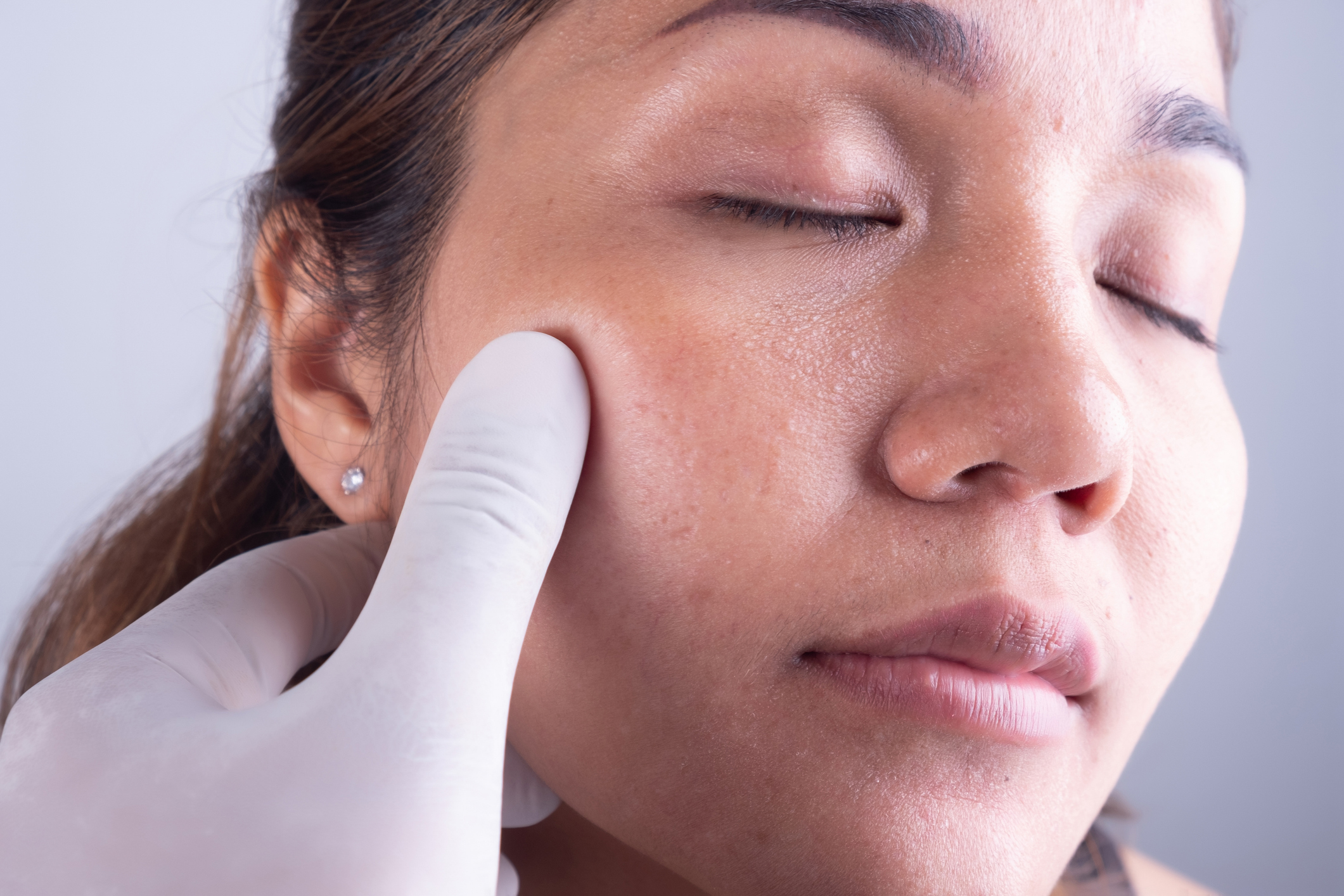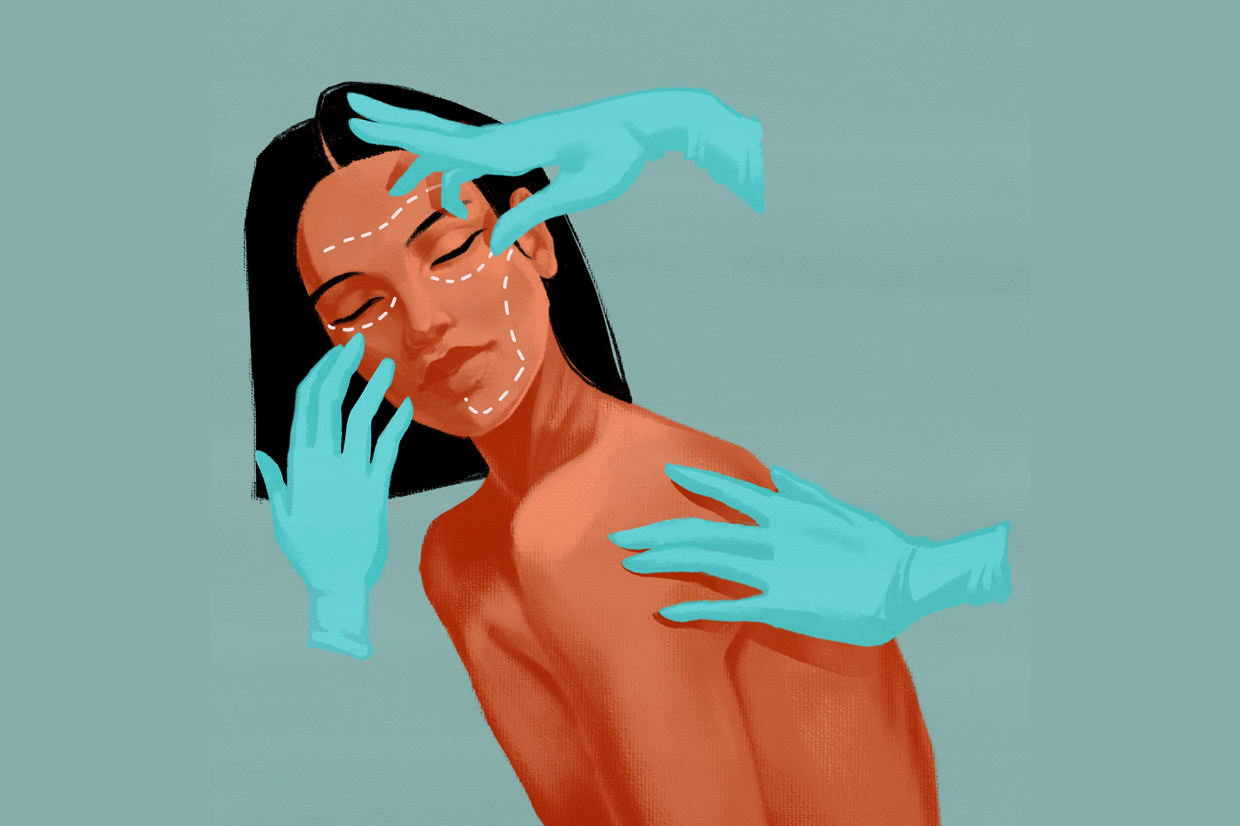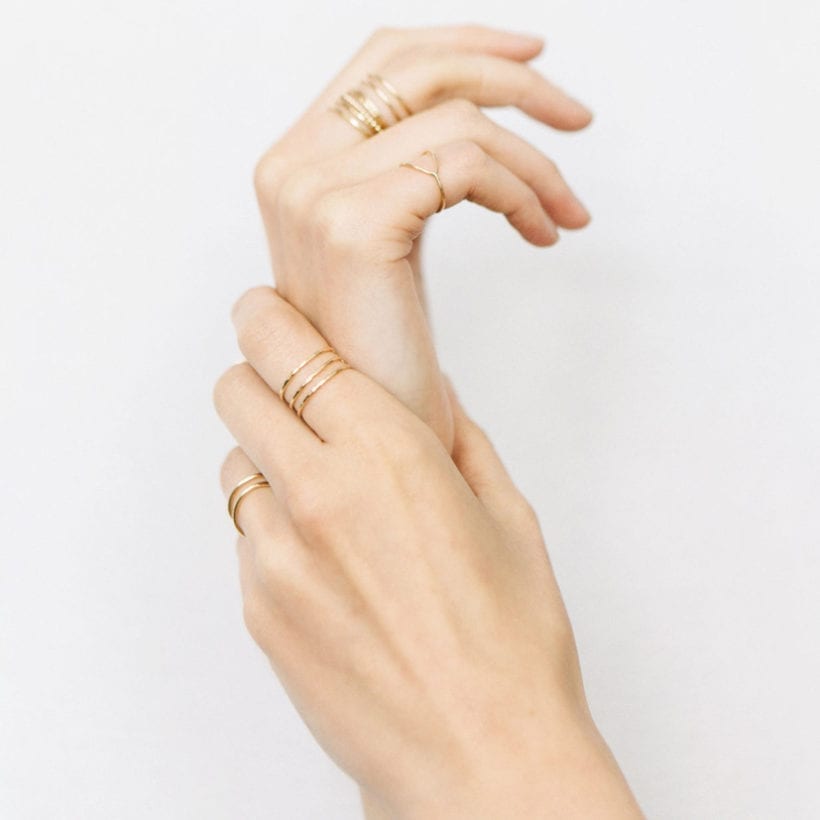If you’re noticing that Hollywood is getting a new look with higher cheekbones and sharp jawlines, it could be thanks to buccal fat removal. In a world where it’s still rare for celebs to admit to getting work done, we appreciate when stars like Chrissy Teigen opened up about what goes on behind the scenes. She recently took to her Instagram stories to talk about getting buccal fat removal surgery to achieve sculpted and hollowed-out cheekbones: “I’m seeing the results, and I like it.” The slimming face procedure saw a 16% increase in searches on Yelp in 2021.
The outcome looks different from person to person, but think about it as the way your cheekbones would look if you were blowing a whistle or if you had permanent contouring makeup done on your face. The surgery has been around for many decades, but to take a closer look at why it’s becoming popular again, we chatted with Dr. Stafford Broumand, board-certified plastic surgeon of 740 Park Avenue Plastic Surgery in NYC, to tell us the real deal. Below, find out more about what buccal fat removal is, what’s involved in the procedure, and all your other questions if you’re curious about potentially getting it done for yourself.
For starters, what are buccal fat pads and their purpose?
Pronounced like the word “buckle,” your “buccal fat pads are in the cheek, and they’re a discreet area just underneath the cheekbones and lateral to the upper mouth,” says Broumand. It has a significant impact on the appearance of your face shape. Everyone is born with buccal fat pads. In addition to filling out the spaces of the deep tissue, “they give padding to blood vessels, nerves, and the parotid duct as it goes into your mouth,” he says. The natural size of your buccal fat pads are mostly due to genetics, but their size can change “as you gain or lose weight. So if you get thinner and you have full buccal fat pads, you’ll see them more pronounced. If you gain weight, you’ll probably see them less,” he adds.

What is buccal fat removal?
“If you have a fuller, rounder face or localized fullness in your cheeks, this process makes people’s face shapes look more angular,” says Broumand. If you’ve typically considered your round cheeks to attribute to a “baby face,” this process is for those who want a more balanced or mature face shape.
What’s involved in the procedure?
“It’s an easy operation that should be done by a board-certified plastic surgeon,” he says. Once you get anesthesia, “it’s done through an incision inside the mouth, and the buccal fat pads usually pop out like popcorn. The whole thing comes out — there’s no such thing as a partial removal.” You’re in and out relatively quickly as it takes less than an hour, and there’s no preparation involved.
Who makes an ideal candidate for buccal fat removal?
“You should always talk to your doctor to make sure that it’s the right thing to do for you. We’re always reluctant to take the fat out of the face. These days fillers are popular and more common because you don’t have to undergo surgery for it,” he says. But, if you want the permanent look of a chiseled face without having to go into your doctor’s office for maintenance the way you do for fillers, buccal fat removal could be worth considering. Budget wise, it may save you some money in the long run if you compare buccal fat removal (about five to $10K for the procedure depending on where you live and who performs the surgery) and dermal fillers (which typically costs around $600 per syringe and need to be done every six to 18 months).
You should always talk to your doctor to make sure that it’s the right thing to do for you.
“A good candidate is someone who has a shape to their face, where the buccal fat has a prominence. Someone who’s not a candidate doesn’t have the fullness of that area and wants to have more of a chiseled look. It’s not something that we encourage,” he says. It’s also important to be in good health and have a stable weight. If you’re overweight, your buccal fat pads aren’t the main reason that’s contributing to the fullness of your face, so removing them likely won’t give you the results you’re looking for. Buccal fat removal is typically not recommended for those that are over 50 since buccal fat naturally decreases as you age.
Why has it been gaining more traction?
“Buccal fat removal waxes and wanes in popularity. The last time it was this popular was in the eighties and nineties when the chiseled look was very popular on runways,” says Broumand. Our selfie culture plays a large role: “These days, you have social apps that have face-morphing filters that make it look like their faces are more shaped and sculpted. So maybe social media has increased the discourse and popularity of it,” he says. Plus, with increased work-from-home flexibility, “people see themselves on Zoom calls more and have more time to scrutinize their faces. With the pandemic, they can also recuperate from the procedure with a mask on,” he says.
What’s the recovery process like?
The biggest perk is that there’s zero visible scarring since the incision is done inside the mouth. “But, your face will be swollen for about five days. You have a couple of stitches in the mouth. You will have to rinse their mouth with a peroxide rinse and be a little careful about what you eat. It’s like having a dental procedure,” he says.
What are the risks to buccal fat removal?
Though celebs like Teigen are happy with their results, all plastic surgeries come with a level of risk as you never truly know what the outcome will be: “The face can end up looking too gaunt or hollow. During the procedure, there are nerves and ducts that are all intertwined with the buccal fat pad, so your doctor has to be very conscientious not to damage them or injure them,” he says.
There are also a number of other risk factors to consider, such as:
- Excessive bleeding
- Infection
- Negative reactions to anesthesia
- Hematoma
- Lockjaw
- Seroma (fluid accumulation)
- Salivary gland damage
- Facial nerve damage
- Deep vein thrombosis
- Cardiac or pulmonary side effects
- Excess removal of fat
- Facial asymmetry
As with anything cosmetic, you want to go with an experienced surgeon and discuss with them if it’s the best decision for you.







